

Nürnberg
and
Nazi Party
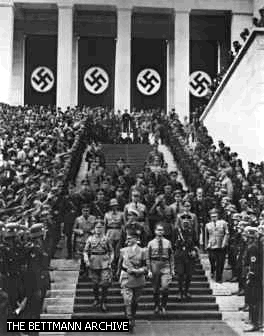
Hitler at Nürnberg
Triumph of the Will
German motion picture about the Nazi Party rally at Nürnberg, Germany, in 1934. Leni Riefenstahl directed this propaganda film, which was commissioned by Adolph Hitler and released in 1935.
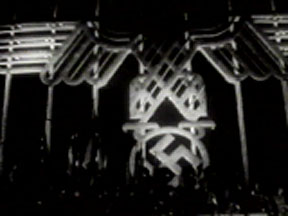
night rally 1934
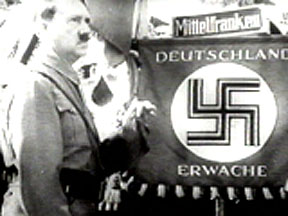
Hitler
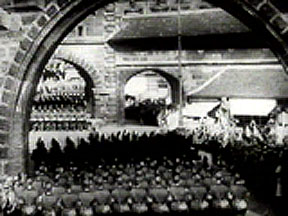
marching thru Nürnberg and rally close
It is considered one of the most effective propaganda movies ever produced. Riefenstahl glorified Hitler and boosted German nationalist feelings so powerfully that the United States, Britain, and Canada banned the film.
reviewing stand in 1934
Nazi rally stand
(as it looks in 2001)
platform where Hitler stood
Photos from 2004
the reviewing stand
where Hitler stood
the grounds
which were filled with Nazi supporters
the unfinished coliseum
the interior
![]()
NÜRNBERG TRIALS
War Crimes Trials, trials of persons charged with criminal violation of the laws and customs of war and related principles of international law.
The most important of these trials were held in Nürnberg, Germany, under the authority of two legal instruments. One, the so-called London Agreement, was signed by representatives of the United States, the United Kingdom, France, and the USSR in London on August 8, 1945; the other, Law No. 10, was promulgated by the Allied Control Council in Berlin on December 20, 1945.
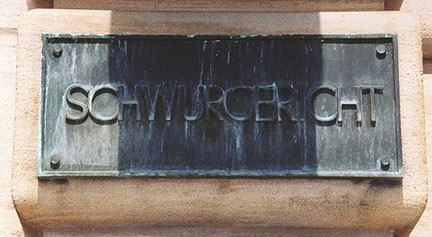
the court
(as designated today)
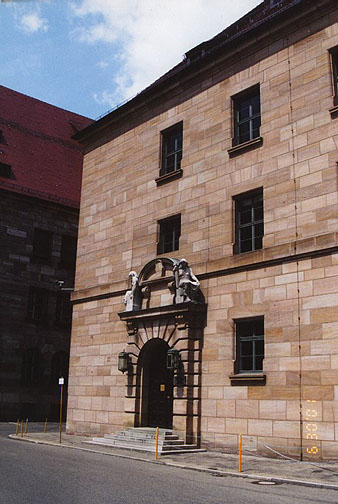
entrance
The London Agreement provided for the establishment of the International Military Tribunal composed of one judge and one alternate judge from each of the signatory nations, to try war criminals. Under the London Agreement, the crimes charged against defendants fell into three general categories: crimes against peace, that is, crimes involving the planning, initiating, and waging of aggressive war; war crimes, that is, violations of the laws and customs of war as embodied in the Hague Conventions and generally recognized by the military forces of civilized nations; and crimes against humanity, such as the extermination of racial, ethnic, and religious groups and other large-scale atrocities against civilians.
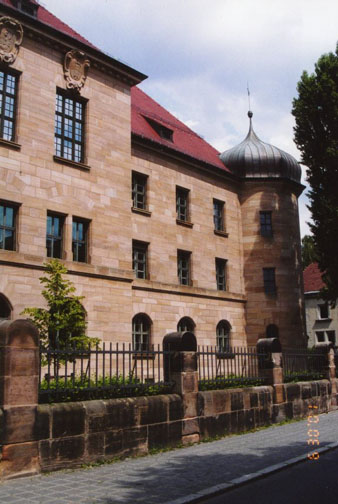
trail was held on the third floor
On October 18, 1945, the chief prosecutors lodged an indictment with the tribunal charging 24 individuals with a variety of crimes and atrocities, including the deliberate instigation of aggressive wars, extermination of racial and religious groups, murder and mistreatment of prisoners of war, and the murder, mistreatment, and deportation to slave labor of hundreds of thousands of inhabitants of countries occupied by Germany during the war.
Among the accused were the Nationalist Socialist leaders Hermann Göring and Rudolf Hess, the diplomat Joachim von Ribbentrop, the munitions maker Gustav Krupp von Bohlen und Halbach, Field Marshal Wilhelm Keitel, Grand Admiral Erich Raeder, and 18 other military leaders and civilian officials. Seven organizations that formed part of the basic structure of the Nazi government were also charged as criminal. These organizations included the SS (Schutzstaffel, German for "Defense Corps"), the Gestapo (Geheime Staatspolizei, "Secret State Police"), the SA (Sturmabteilung, "Storm Troops"), and the General Staff and High Command of the German armed forces.
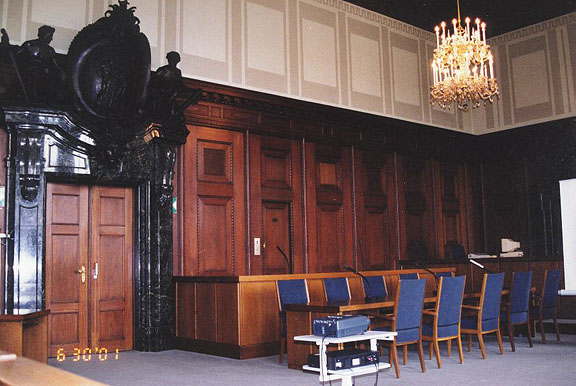
where the
prisoners sat
(as it appears today)
small door is where the accused entered
The trial began on November 20, 1945. Much of the evidence submitted by the prosecution consisted of original military, diplomatic, and other government documents that fell into the hands of the Allied forces after the collapse of the German government.
![]()
Photos from 2004
the court building
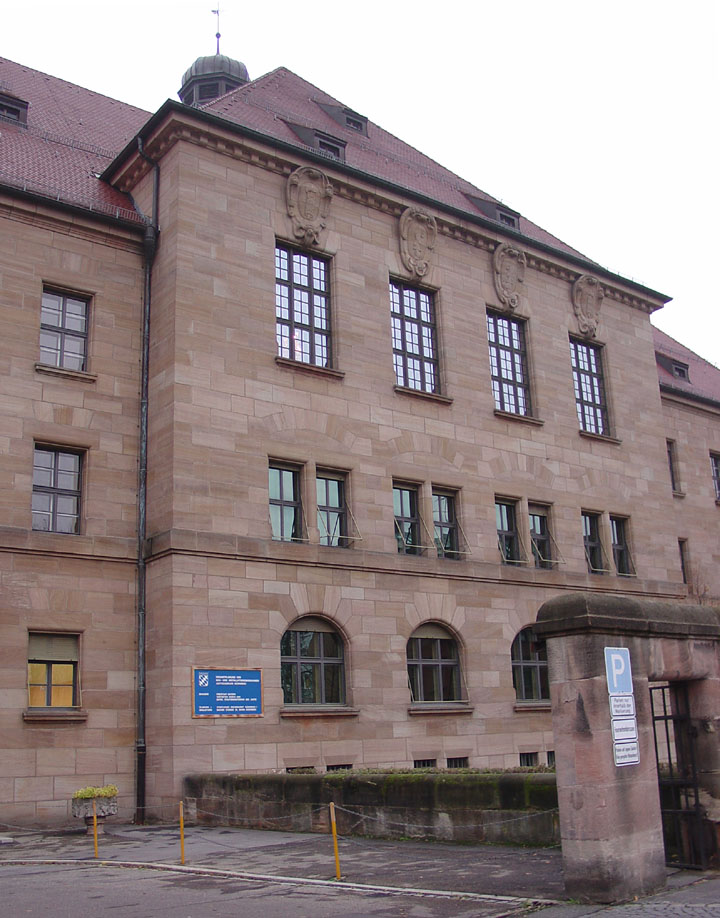
windows of the court room
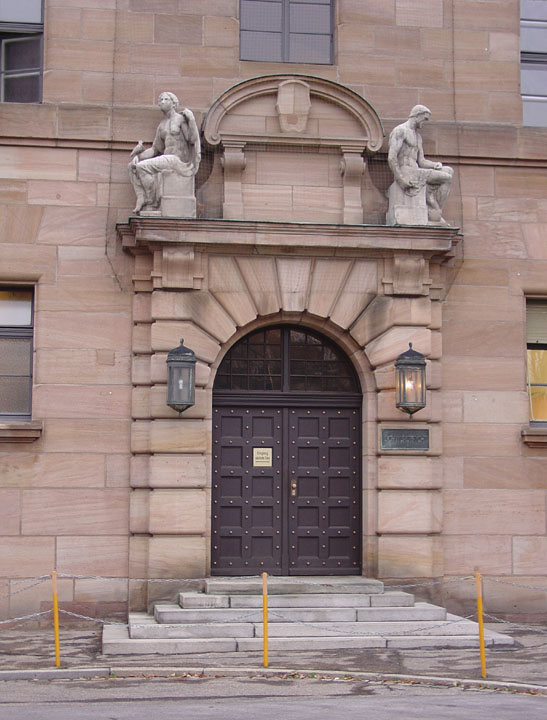
the entrance
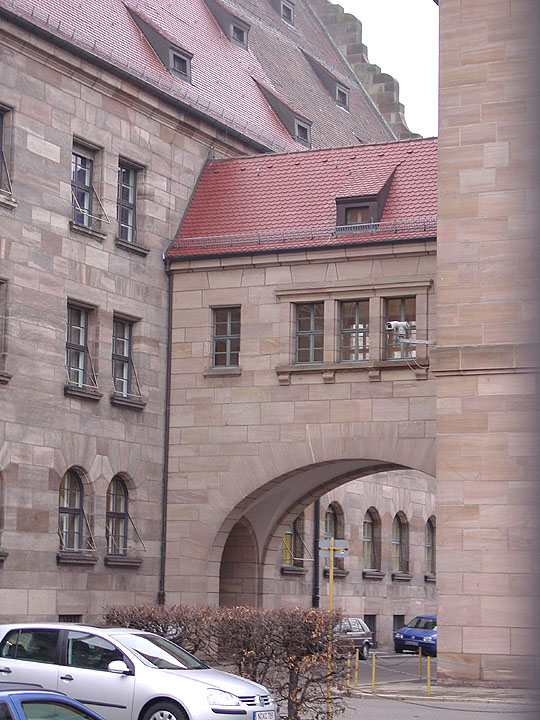
the bridge to the former prison
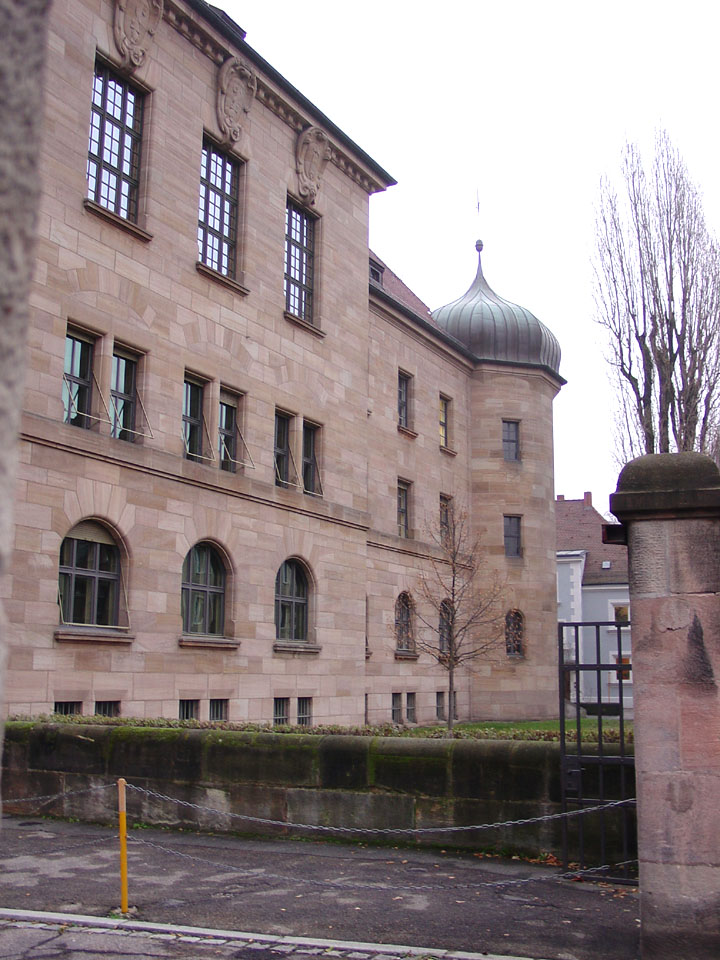
the court building
![]()
Conclusions of the First Trial
The judgment of the International Military Tribunal was handed down on September 30-October 1, 1946. Among notable features of the decision was the conclusion, in accordance with the London Agreement, that to plan or instigate an aggressive war is a crime under the principles of international law. The tribunal rejected the contention of the defense that such acts had not previously been defined as crimes under international law and that therefore the condemnation of the defendants would violate the principle of justice prohibiting ex post facto punishments. It also rejected the contention of a number of the defendants that they were not legally responsible for their acts because they performed the acts under the orders of superior authority, stating that "the true test ... is not the existence of the order but whether moral choice (in executing it) was in fact possible."
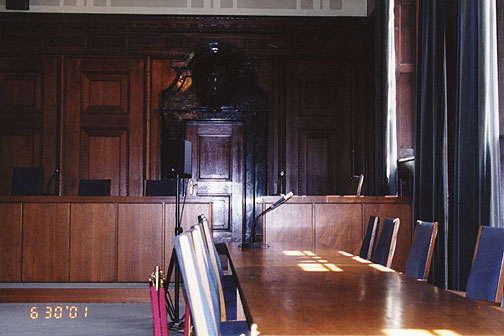
where the prosecutors
sat
(as it appears in 2001)
With respect to war crimes and crimes against humanity, the tribunal found overwhelming evidence of a systematic rule of violence, brutality, and terrorism by the German government in the territories occupied by its forces. Millions of persons were destroyed in concentration camps, many of which were equipped with gas chambers for the extermination of Jews, Roma (Gypsies), and members of other ethnic or religious groups. Under the slave-labor policy of the German government, at least 5 million persons had been forcibly deported from their homes to Germany. Many of them died because of inhuman treatment. The tribunal also found that atrocities had been committed on a large scale and as a matter of official policy.
Of the seven indicted organizations, the tribunal declared criminal the Leadership Corps of the National Socialist Party, the SS, the SD (Sicherheitsdienst, German for "Security Service"), and the Gestapo.
Twelve defendants were sentenced to death by hanging, seven received prison terms ranging from ten years to life, and three, including the German politician and diplomat Franz von Papen and the president of the German Central Bank Hjalmar Horace Greeley Schacht, were acquitted. Those who had been condemned to death were executed on October 16, 1946. Göring committed suicide in prison a few hours before he was to be executed.
Subsequent Trials
After the conclusion of the first Nürnberg trial, 12 more trials were held under the authority of Control Council Law No. 10, which closely resembled the London Agreement but provided the war crimes trials in each of the four zones of occupied Germany.
About 185 individuals were indicted in the 12 cases. Those indicted included doctors who had conducted medical experiments on concentration camp inmates and prisoners of war, judges who had committed murder and other crimes under the guise of the judicial process, and industrialists who had participated in the looting of occupied countries and in the forced-labor program. Other persons indicted included SS officials, who had headed the concentration camps, administered the Nazi racial laws, and carried out the extermination of Jews and other groups in the eastern territories overrun by the German army; and high military and civilian officials who bore responsibility for these and other criminal acts and policies of the Third Reich. A number of doctors and SS leaders were condemned to death by hanging, and approximately 120 other defendants were given prison sentences of various durations; 35 defendants were acquitted.
![]()
![]()